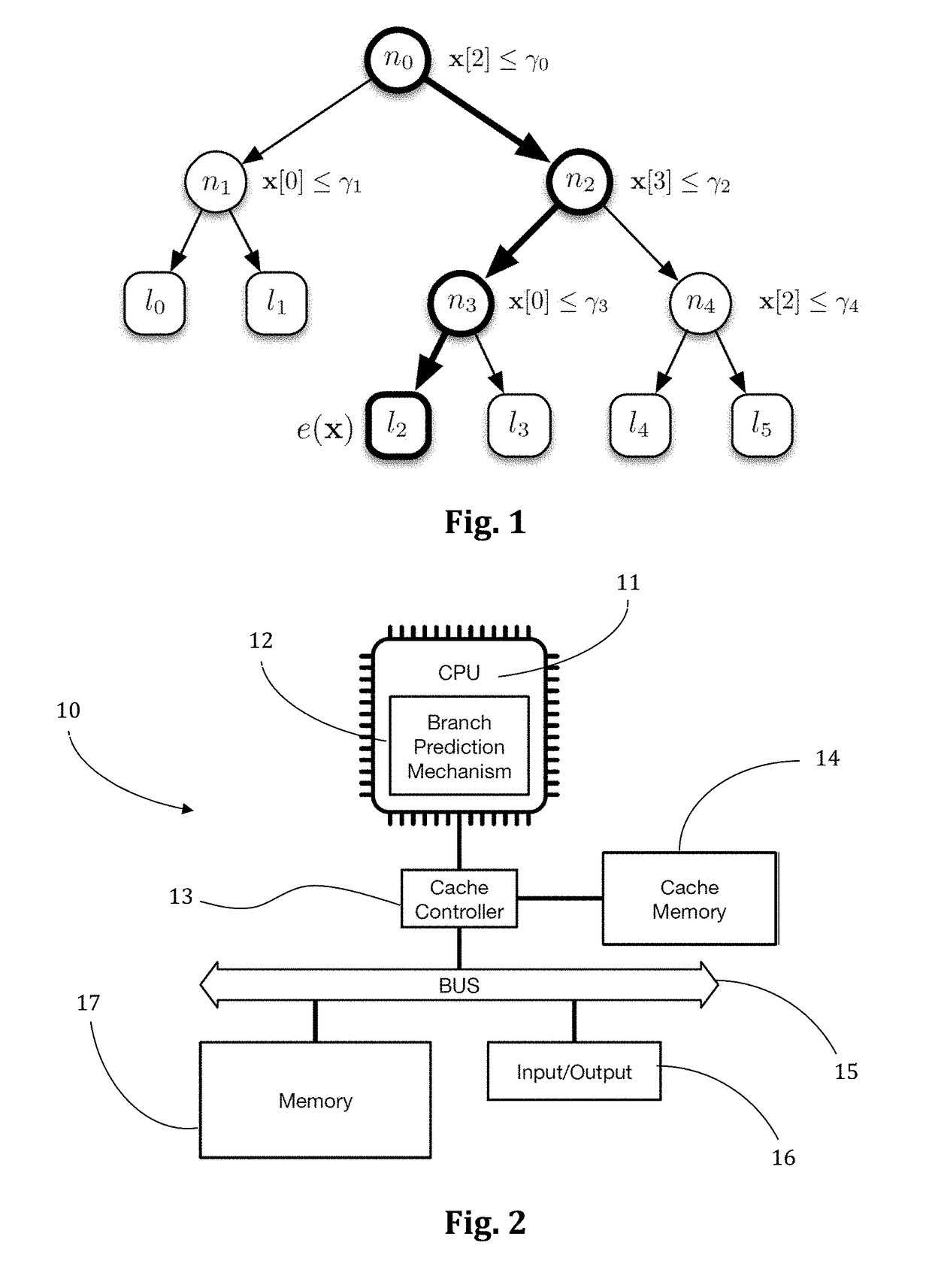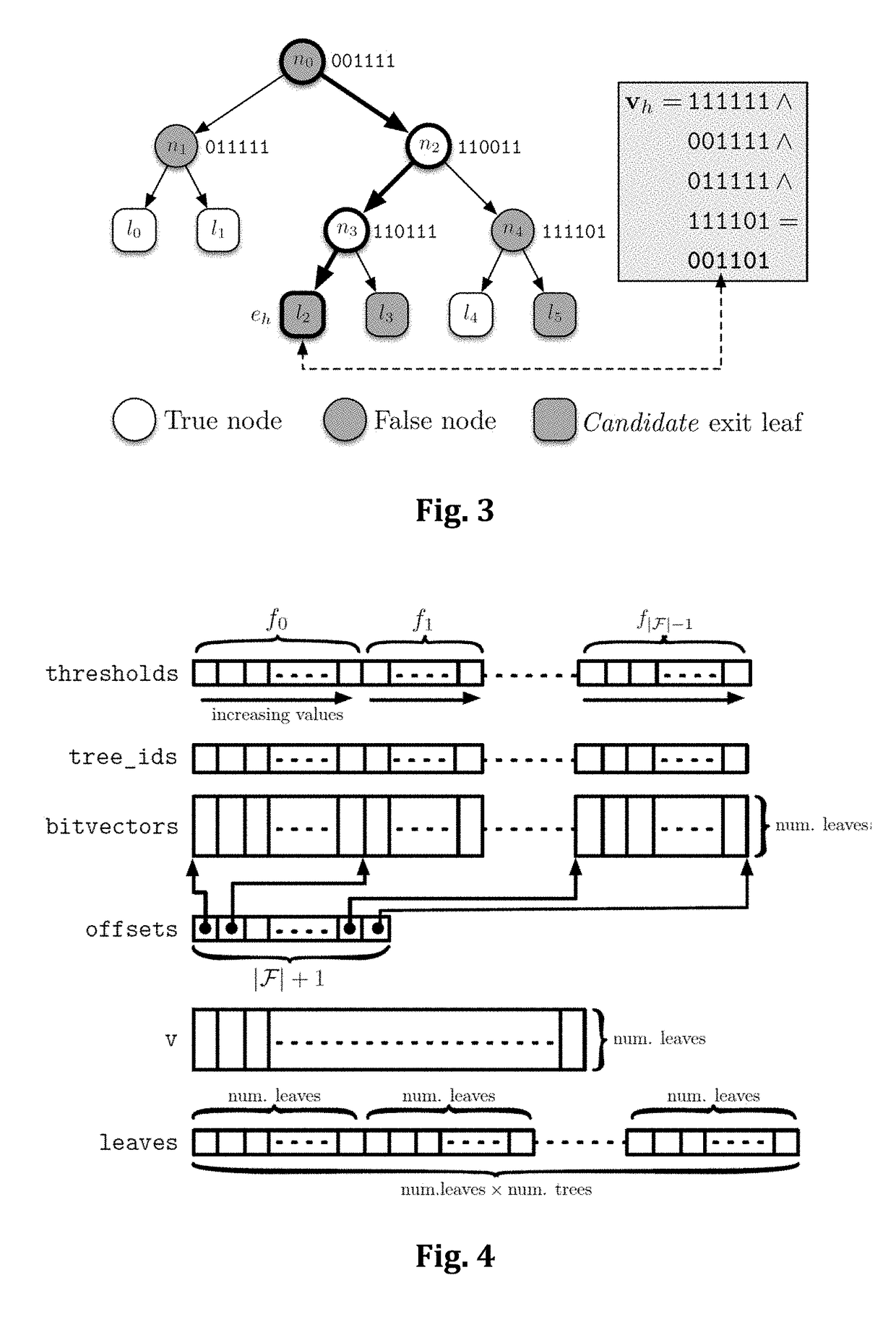A method to rank documents by a computer, using additive ensembles of regression trees and cache optimisation, and search engine using such a method
a computer and ranking technology, applied in the field of ranking documents by a computer, can solve the problems of substantial performance penalty, poor cache performance, and the general unpredictable nature of conditional statements such as if-then-else commands
- Summary
- Abstract
- Description
- Claims
- Application Information
AI Technical Summary
Benefits of technology
Problems solved by technology
Method used
Image
Examples
Embodiment Construction
[0046]In order to efficiently exploit memory hierarchies and to reduce the branch mis-prediction rate, we propose a method based on a totally novel traversal of the trees ensemble, which is here called QUICKSCORER (QS). The building block of our approach is an alternative method for tree traversal based on bitvector computations, which is presented in the following subsection. Given a tree and a vector of document features, our traversal processes all its nodes and produces a bitvector which encodes the exit leaf for the given document. In isolation this traversal is not particularly advantageous over the others, since in principle it requires to evaluate all the nodes of a tree. However, it has the nice property of being insensitive to the order in which the nodes are processed. This makes it possible to interleave the evaluation of the trees in the ensemble in a cache-aware fashion. In addition, the proposed bitvector encoding allows to save the computation of many test conditions...
PUM
 Login to View More
Login to View More Abstract
Description
Claims
Application Information
 Login to View More
Login to View More - R&D
- Intellectual Property
- Life Sciences
- Materials
- Tech Scout
- Unparalleled Data Quality
- Higher Quality Content
- 60% Fewer Hallucinations
Browse by: Latest US Patents, China's latest patents, Technical Efficacy Thesaurus, Application Domain, Technology Topic, Popular Technical Reports.
© 2025 PatSnap. All rights reserved.Legal|Privacy policy|Modern Slavery Act Transparency Statement|Sitemap|About US| Contact US: help@patsnap.com



